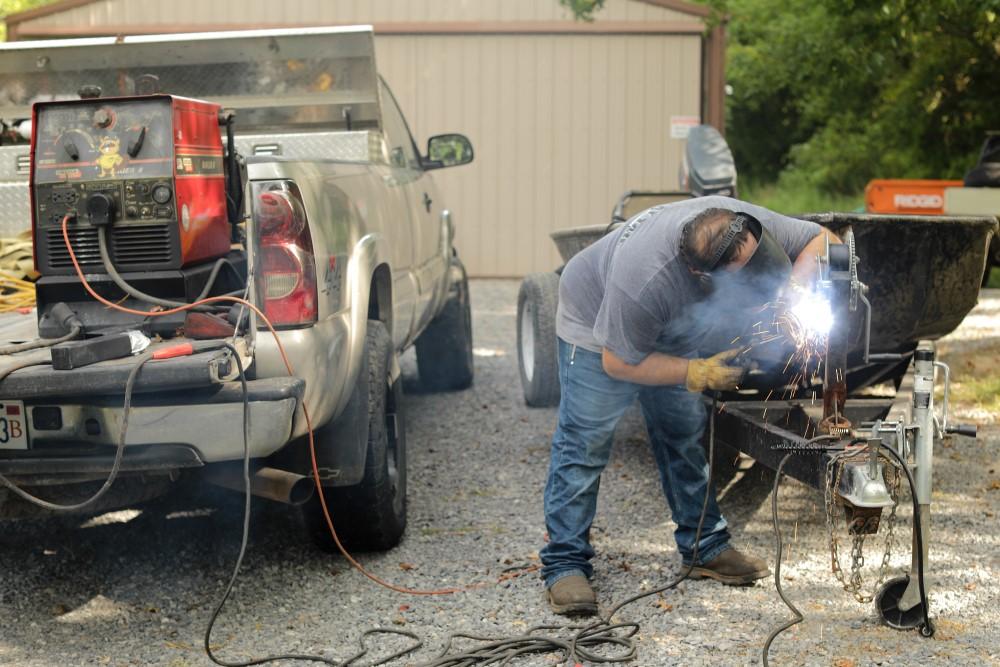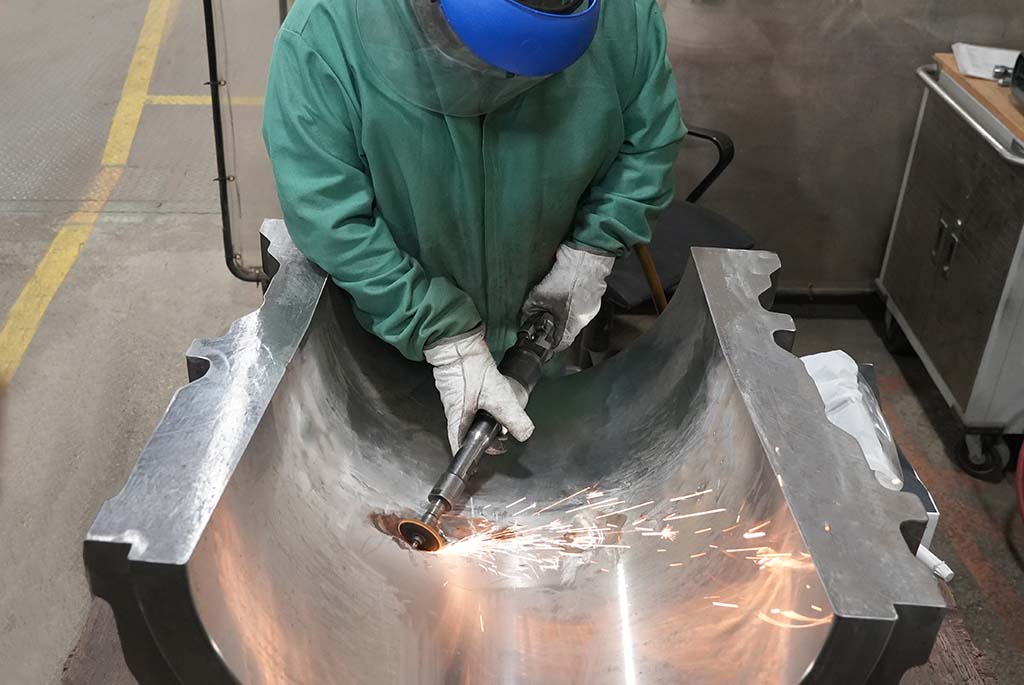Everything about Welding: Key Insights Into Techniques and Ideal Practices for Success
Welding includes a variety of techniques, each suited for particular products and applications. Recognizing these methods, such as GMAW, SMAW, and TIG, is essential for accomplishing perfect results. Additionally, the ideal tools and safety and security methods can not be forgotten. As preparation and troubleshooting play vital functions in the welding process, understanding these aspects can significantly improve the top quality of the last product. What are the essential factors that assure a successful weld?
Recognizing Various Welding Techniques
Welding techniques include a variety of methods, each matched to certain applications and materials. Amongst the most usual strategies are Gas Steel Arc Welding (GMAW), Shielded Steel Arc Welding (SMAW), and Tungsten Inert Gas Welding (TIG) GMAW, also referred to as MIG welding, is popular for its speed and versatility, making it ideal for slim products. SMAW, or stick welding, is preferred for its simplicity and effectiveness in exterior settings, specifically with thicker steels. TIG welding uses accuracy and control, making it appropriate for complex work and non-ferrous steels (Montana Mobile Welding and Repair Fabrication). Each technique has its one-of-a-kind benefits and factors to consider, enabling welders to choose the best approach based on the project's demands, product kind, and desired end results. Understanding these strategies is vital for effective welding
Crucial Welding Equipment and Devices
While numerous welding techniques call for particular abilities, the right tools and devices are equally necessary for achieving top quality outcomes. Important welding devices includes welding equipments, which differ depending on the method-- such as MIG, TIG, or stick welding. Safety equipment, consisting of handwear covers, safety helmets, and aprons, assurances safety and security and convenience during the procedure. Additionally, components and clamps aid secure materials in position, guaranteeing accuracy in welds. Consumables like welding rods, cable, and shielding gas are also essential elements that influence the quality of the weld. Devices such as mills and cutters assist in surface preparation and post-weld ending up, contributing to an expert end result. Spending in top notch tools inevitably enhances the performance and efficiency of welding jobs.
Safety And Security Practices in Welding
Proper safety and security methods are necessary in the welding sector to secure workers from potential threats. Welders must wear appropriate personal safety equipment (PPE), consisting of safety helmets with appropriate shading, gloves, and flame-resistant clothing. Adequate air flow is crucial to minimize direct exposure to hazardous fumes and gases created during the welding procedure. In addition, workers ought to be trained in the correct handling of welding tools to stop crashes. Fire safety actions, such as keeping flammable materials far from the welding location and having fire extinguishers easily offered, are necessary. Routine evaluations of equipment and workspaces can assist recognize prospective threats before they bring about accidents. By adhering to these safety methods, welders can develop a more secure working setting and reduce risks connected with their profession.
Preparing Materials for Welding
Preparing products for welding is a crucial action that considerably affects the high quality and stability of the end product (Welding). Appropriate prep work involves cleaning up the surface areas to get rid of pollutants such as oil, rust, and dirt, which can compromise the weld. Methods such as grinding, fining sand, or making use of solvents are commonly employed to achieve a tidy surface. In addition, guaranteeing that the materials fit with each other comfortably is crucial; gaps can result in weak welds. It's likewise crucial to think about the placement and positioning of the parts, as this will certainly influence the ease of welding and the final end result. Selecting the proper filler product and ensuring compatibility with the base steels is necessary for achieving strong, durable welds.
Tips for Achieving High-Quality Welds
Achieving high-quality welds needs focus to detail and adherence to finest practices throughout the welding procedure. Proper joint preparation is vital, making sure surfaces are clean and cost-free from contaminants. Picking the suitable filler product and welding strategy based on the base steels is important for perfect bonding. Maintaining constant travel speed and angle while welding can prevent flaws and advertise harmony. Additionally, regulating heat input is essential; excessive heat can bring about bending and compromised joints. Frequently examining the welds during the procedure permits immediate changes if required. Using suitable post-weld treatments, such as cleansing and stress relief, can boost the longevity and honesty of the weld, inevitably making sure an effective result.
Repairing Usual Welding Issues
Welding typically presents obstacles that can impact the high quality and honesty of the last product. Common issues such as porosity, irregular weld beads, and overheating can emerge, each needing particular fixing methods. Comprehending these issues is crucial for welders to boost their skills and achieve suitable results.
Porosity Troubles Clarified
Porosity can usually be overlooked, it remains a vital issue in welding that can compromise the honesty of a completed product. Porosity describes the existence of small gas pockets within the weld bead, which can lead and damage the joint to early failing. This problem usually arises from pollutants, moisture, or inappropriate shielding gas protection throughout the welding process. To mitigate porosity, welders need to verify that the base materials are dry and clean, use appropriate protecting gases, and keep consistent welding criteria. Routinely checking the tools and setting can also assist recognize potential issues before they show up in the weld. Attending to porosity properly is essential for attaining solid, durable welds that fulfill high quality requirements.

Irregular Weld Beads
Inconsistent weld grains can significantly impact the top quality and stamina of a completed item. Various factors add to this concern, including incorrect traveling speed, incorrect amperage settings, and inconsistent electrode angles. When the welder relocates as well rapidly, a grain might show up narrow and lack infiltration, while relocating too gradually can trigger excessive buildup. In addition, utilizing the incorrect amperage can result in either damaging or excessive spatter, both of which compromise weld honesty. The welder's method, such as inconsistent lantern movement, try this out can also result review in uneven grain look. To mitigate these troubles, welders should concentrate on maintaining stable, regulated movements and making sure appropriate tools setups to accomplish uniformity in their welds. Consistency is crucial to achieving strong and dependable welds.
Getting Too Hot and Bending Issues
Too much warmth throughout the welding procedure can lead to considerable overheating and contorting issues, influencing the structural honesty of the workpiece. These troubles commonly show up as distortion, which can jeopardize alignment and fit-up, making more setting up challenging. Elements adding to overheating consist of the choice of welding parameters, such as voltage and take a trip speed, in addition to the kind of material being welded. To minimize these concerns, welders should preserve constant travel rate and proper heat input while checking the work surface temperature. In addition, preheating or post-weld heat treatment can aid reduce anxieties triggered by rapid air conditioning - Belgrade Welding. Regular evaluation and adherence to ideal techniques are essential in preventing getting too hot and making sure the durability and reliability of bonded structures
Frequently Asked Questions
What Are the Occupation Opportunities in the Welding Industry?
The welding market uses varied profession opportunities, consisting of settings as welders, assessors, designers, and teachers. Specialists can function in production, building, aerospace, and vehicle sectors, gaining from solid demand and competitive incomes in different duties.
Exactly How Can I Enhance My Welding Rate Without Sacrificing High Quality?
To improve welding rate without compromising quality, one should practice efficient strategies, keep equipment, optimize settings, and improve hand-eye coordination. Normal training and looking for comments can additionally significantly add to achieving quicker, high-quality welds.
What Accreditations Are Offered for Welders?
Countless qualifications exist for welders, consisting of those from the American Welding Culture (AWS), the National Center for Building Education And Learning and Research (NCCER), and numerous industry-specific companies. These qualifications boost employability and demonstrate skill proficiency.
How Does Welding Impact the Characteristics of Metals?
Welding affects the residential or commercial properties of metals by changing their microstructure, which can bring about adjustments in firmness, strength, and ductility. Warm input and air conditioning rates during the process substantially influence best site these material attributes.
Can I Bonded Dissimilar Metals Together?
